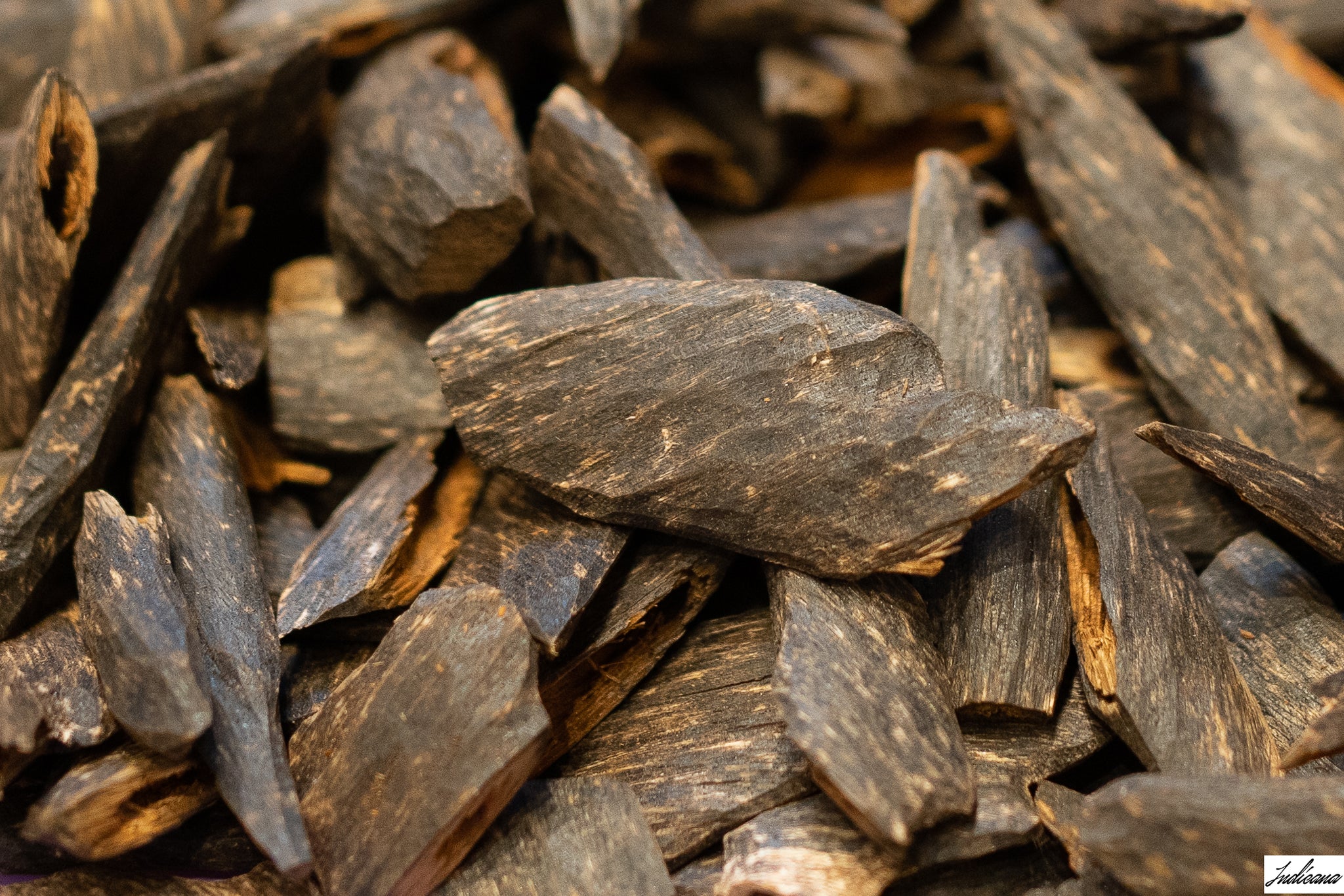
Oud - The Most Expensive Perfumery Ingredient on Earth
Oud (Agarwood, Gaharu, Aloeswood) - The Most Expensive Perfumery Ingredient on Earth
What is Oud?
Oud (Agarwood) is a dark and heavy, oleoresin filled fragrant heartwood which is formed when a healthy tree of Aquilaria species is damaged either by fungal infection or physically to which tree's self defense mechanism responds by generating these oleoresins.
Oud oil comes from hydro-distillation of oud.
As a healthy tree, Aquilaria in itself is worth next to nothing but high-quality oud can fetch as much as US$1,000 per gram!
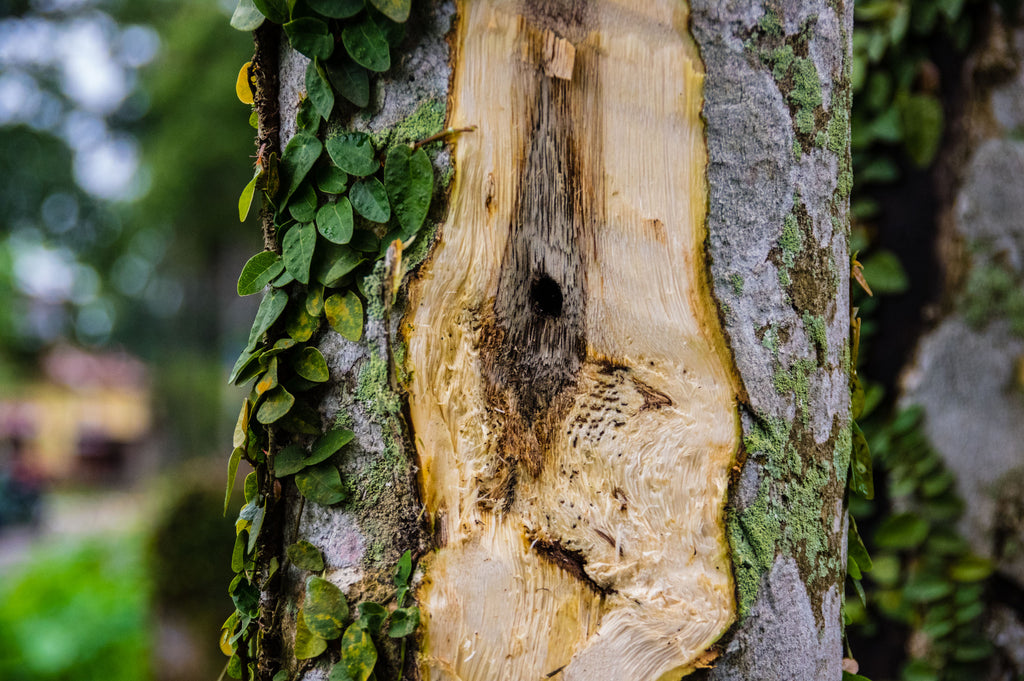 (Picture above: Formation of oud (dark infected wood in the centre) in the Aquilaria tree in Assam - India)
(Picture above: Formation of oud (dark infected wood in the centre) in the Aquilaria tree in Assam - India)
Oud in the Western Perfumery!
Oud has taken the world of western perfumery by storm.
Oud is being used in world class perfumeries as a fixative and is highly prized by European perfumers for mixing their best grade scents.
Oud oil lends mesmerizingly heavy, deep and warm animalic, spicy, leathery, balsamic, woody notes to the perfumes.
Oud Wood by Tom Ford. Creed Royal Oud. Christian Dior Leather Oud. Dolce & Gabbana Velvet Desert Oud. Incense Oud by Kilian. Armani Prive Oud Royal…... Oud seems like it’s everywhere, in every perfume!

For the people in the west, the use of oud in perfumery is something new. But for the people in the east, it is something deeply embedded in their history and culture!
💡Did You Know : A vast majority of perfume houses in the world do not use pure oud oil in their perfumes at all. Instead, they use fragrance molecules that best mimic the oud. This is for two reasons:
1. Oud oil is an extremely expensive ingredient to be used in perfumes making the price of the final product way too expensive for the market.
2. Oud oil has 70+ complex compounds making it extremely difficult for it to be produced with the same composition for every batch of oud oil and therefore making it almost impossible for perfumers to ensure all batches of a perfume product have the same aromatic profile.
Where does Agarwood Tree Grow?
 (Picture above: Aquilaria tree or Agarwood tree in Northeast India)
(Picture above: Aquilaria tree or Agarwood tree in Northeast India)
Oud (agarwood, aloe wood, eagle wood, gaharu) is formed in a tropical evergreen tree called Agar tree (Aquilaria species) which is believed to have originated from Assam, India.
Agar tree or Aquilaria is a genus of fifteen species of trees, called lign aloes or lign-aloes trees, in the Thymelaeaceae, now native to southeast Asia. They occur particularly in the rainforests of India, Myanmar, Thailand, Cambodia, Laos, Vietnam, Indonesia, Malaysia, the Philippines, Borneo and New Guinea.

How is Oud Formed in the Tree?
When this tree is attacked by certain fungi in its heartwood, the tree responds to this attack by releasing a type of resin to defend itself. This resin in the inside the tree gives rise to the formation of resinous heartwood which is known as oud.

(Picture above: Oud or agarwood - when burnt it gives complex, intoxicating, heavenly aroma)
Oud, A Deeply Embedded Tradition in the East!
Oud has been used in India, China, Japan and other Asian countries for centuries as an incense burnt in their homes as well in royal palaces. In places of worship and places for gathering of friends and family. For the celebration of a newborn and for the mourning of a dead one. It has transcended virtually every aspect of their lives.
 (Picture above: Such huge pieces of agarwood are very very rare and are considered collector's item)
(Picture above: Such huge pieces of agarwood are very very rare and are considered collector's item)
Use of Oud Oil
Oud oil, distilled from oud, has been used as perfume, in its pure raw form as well blended with other natural perfume ingredients like sandalwood, musk, saffron, amber.
It is one of the oldest materials used in perfumery and is considered to be one of the costliest perfumery raw materials.
Oud oil has also been used as medicine and for therapeutic benefits by Chinese, Indians and Arabs for centuries.
 (Picture above: Pure Oud Oil - Obtained by distillation of oud)
(Picture above: Pure Oud Oil - Obtained by distillation of oud)
What does Oud Oil Smell Like?
Oud oil is mystical, tantalizing, alluring and intoxicating, so diverse and complex that words fail to capture its continuously evolving aroma. It can be sweet floral and vanillic and yet as the same time bitter, spicy, leathery!
As for the very rare and most valuable oud oil distilled from wild trees in the jungles of Assam, it is soft and warm and stands out with its tangy, animalic odour to start with and later unfolds and matures with the smell of woods, trees, grass, rain forests, earth, fruits and flowers, resins, herbs and spices each deeply intertwined into each other and takes you to a different, ancient world.
Agarwood in India
In India, the agar tree of type Aquilaria Agallocha (synonym Aquilaria malaccensis) grows naturally in the north eastern states of Assam, Arunachal Pradesh, Nagaland, Manipur, Mizoram, Tripura and Meghalaya. Meghalaya also has another type of agar tree, Aquilaria Khasiana but it is almost extinct in the wild.
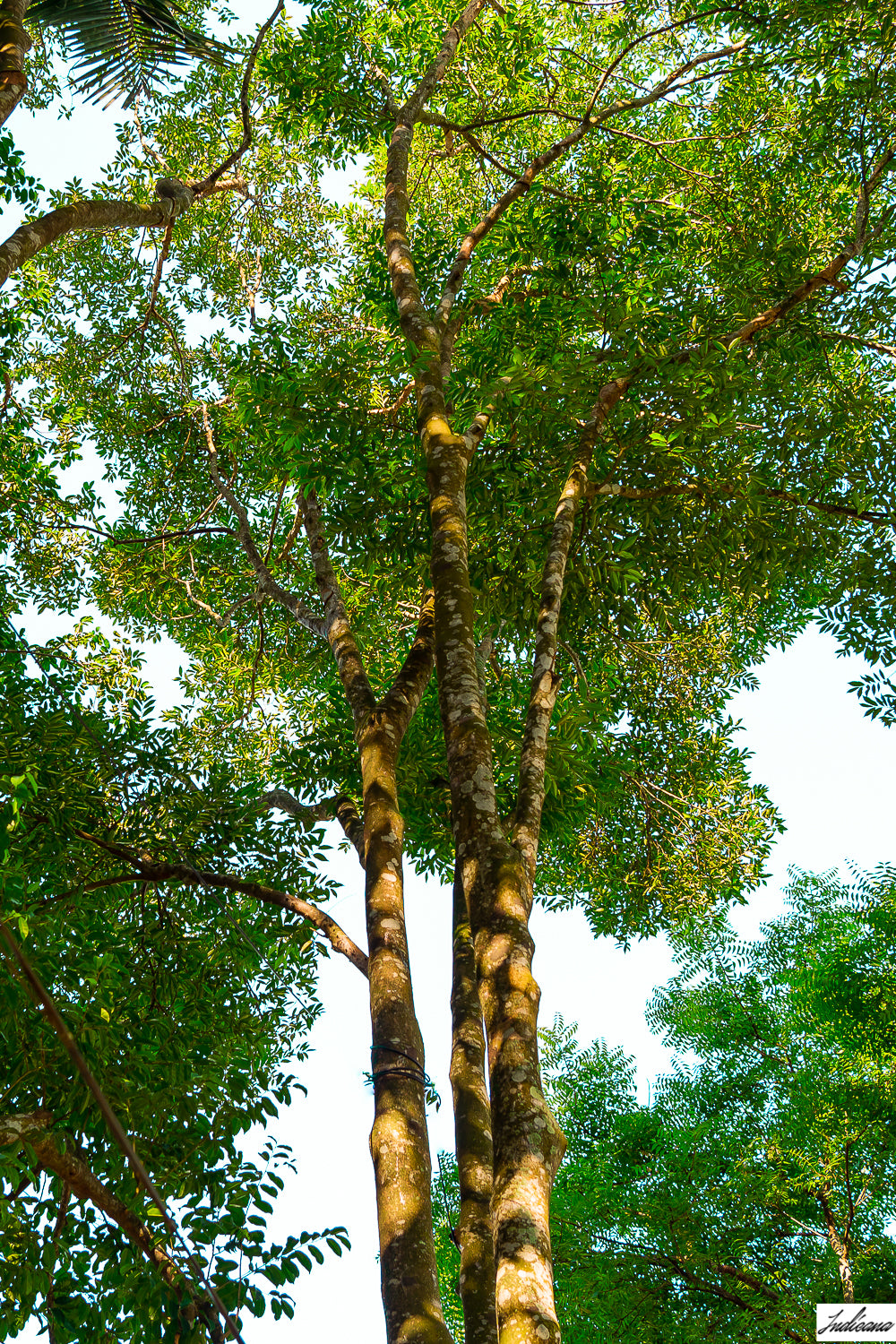
(Picture above: Agarwood Tree in Assam, India. The species found in India is called Aquilaria Malaccensis)
In Assam, the agar tree is also known as Xasi and Sanchi. The agar tree here is classified into two categories, ‘Jati Sanchi’ and ‘Bhola Sanchi’. ‘Bhola sanchi’ grows quickly however the yield is less than that of Jati Sanchi. It is the Jati Sanchi that is preferred for commercial cultivation.
Agar trees are also being organically cultivated in the region along the western coast of India like the states of Kerala, Maharashtra and Gujarat where the soil and climate are quite conducive for its growth.
The agar tree grows to an average height of 21 meters and girth of about 1.5 to 2.4 meters. The stem is almost straight and fluted.

(Picture above: Leaves of Agarwood Tree which are also used to make oud tea)
The traditional agar growing areas show that it prefers acidic soil reaction. The mycorrhiza and other beneficial fungi which seems to be responsible for oil formation in the agar tree being soil borne requires acid soil for their population build up.
History of Trade and Uses of Agarwood
The trade of agarwood products like oud wood and oud oil in Northeast India is prehistoric. There are mentions of agar of ancient Kamarupa (the ancient kingdom in the region of Assam which existed from 350 CE to 1140 CE) in the report of Chinese pilgrim Hiuen Tsang, Abhijana Sakuntalam of Kalidas and Asthasastra of Kautilya.

Evidences also indicate that the distillation of oud oil was done in ancient Assam during thirteenth century. From ancient Assam, oud had been exported to the Middle East through Kamarupa via silk route.
There are mentions of most excellent aloes (oud wood) of Kamarupa being carried all the way to the then western Indian city of Multan (now in present day Pakistan) to pay as tribute in a temple. During those days in Kamarupa, oud was one of the main items of cosmetics as there is mention of this article in different old scriptures of Kamrupa.
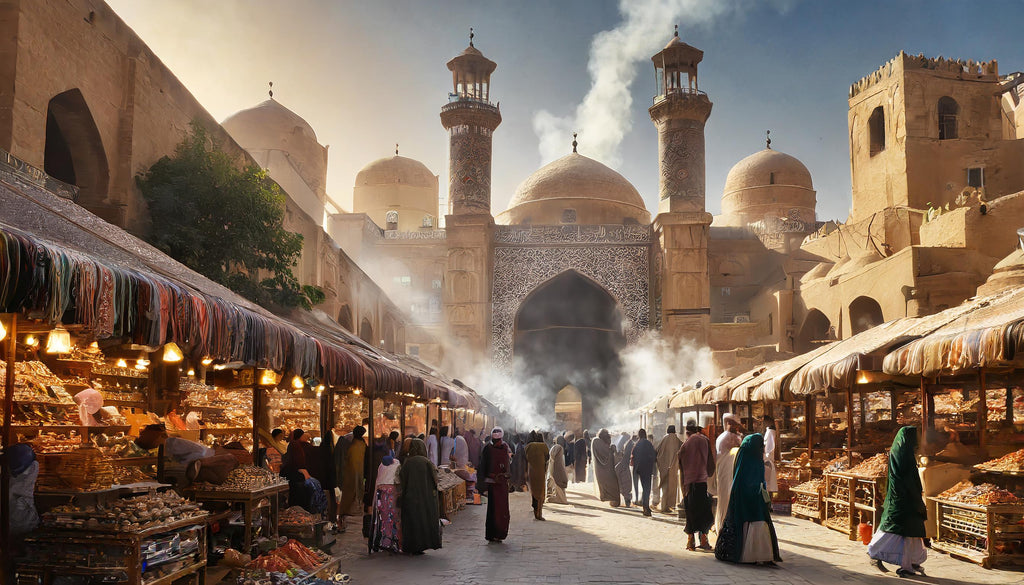
Since 1900, plentiful extraction of agar has been going on in various part of Upper Assam. The oud obtained in Assam was sent to Kolkata and Mumbai and from there to Arabia, Persia, Turkey, Europe etc.
The bark of Aquilaria Malaccensis was used for preparing a writing material called “Sanchi pat” for writing history, mythology, folk songs, medicinal and holy scripts etc.
The water portion obtained as distillate after separating the oud oil during distillation process is used at present in Assam as an efficient stimulant and tonic for the treatment of mental disorder and malnutrition. The agar oil is also used as an aphrodisiac and reported to be very popular among people in the Middle East.
How is Resinous Heartwood formed in Agarwood Trees?
This is the most interesting part of the whole story when the death of an ordinary tree gives life to an extraordinary wood. A deadly, fatal attack by microorganisms on a giant tree transforms the attacked part into a priceless wood oozing with resin; odoriferous, dark and heavy.
The infection of fungi occurs when stem is injured or is bored by a larvae of a stem borer mainly Zeuzera conferta Walker which bores into the trunk of a standing tree and make tunnels inside the tree trunks.
Fungus enters the plant through this vertical hollow sometimes-zigzag tunnel inside the stem, which serves the initial sites of infections.
Later on infections spread on all sides slowly and gradually and ultimately a larger wood volume gets infected. More the insect infestation in the infected area, more is the chance of forming resinous wood.
Infections may also occur due to mechanical or natural injuries on the stem but it is very much localised.
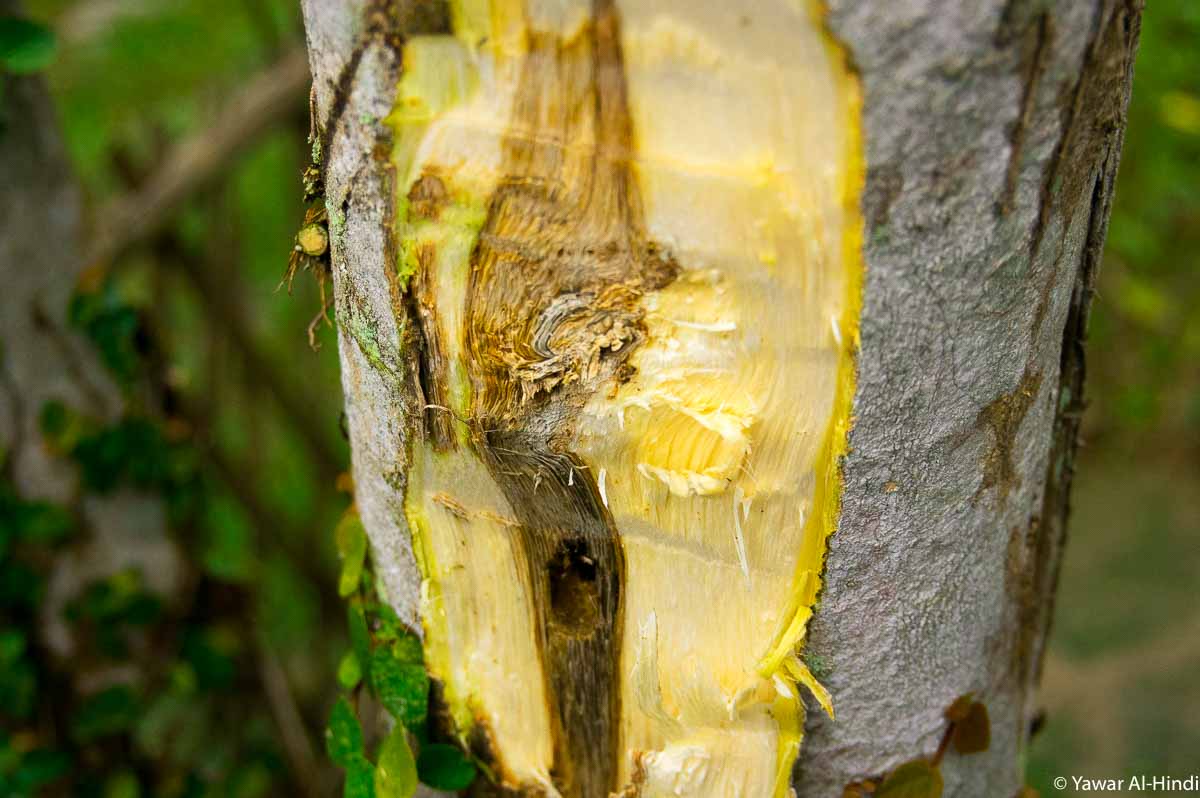 (Picture above: Infected section of an Agarwood Tree)
(Picture above: Infected section of an Agarwood Tree)
Due to infections, oleoresins are accumulated in the infected wood and later become odoriferous. At the initial stage infections appear as brown streaks in the tissue. Accumulation of oleoresins goes on increasing with the increase of infection rate as well as ageing of infection. As more of oleoresins are deposited the intensity of colour of the infected wood increases and finally it becomes black due to increase in concentration.
The fungal infection takes long time to mature and trees about 50 years old have the highest concentration (2.5 - 5.0 kg/tree). Sometimes all the tissues under the bark of the tree may be found synthesising oil. True agarwood is heavier than water.
If the infection starts at a young age of 5 – 6 years, then a total 10 years age may be sufficient to get good quality agarwood or agaru in a plant.
Without infection century old tree may not bear a microscopic piece of agarwood.
Based on the intensity of attack the trees can be grouped as healthy, slightly attacked, moderately attacked and severely attacked trees. In a natural population about 25 to 30% of the trees may get naturally infected and thus productive.
 (Picture above: Infected wood is cut from tree and prepared into finished oud chips)
(Picture above: Infected wood is cut from tree and prepared into finished oud chips)
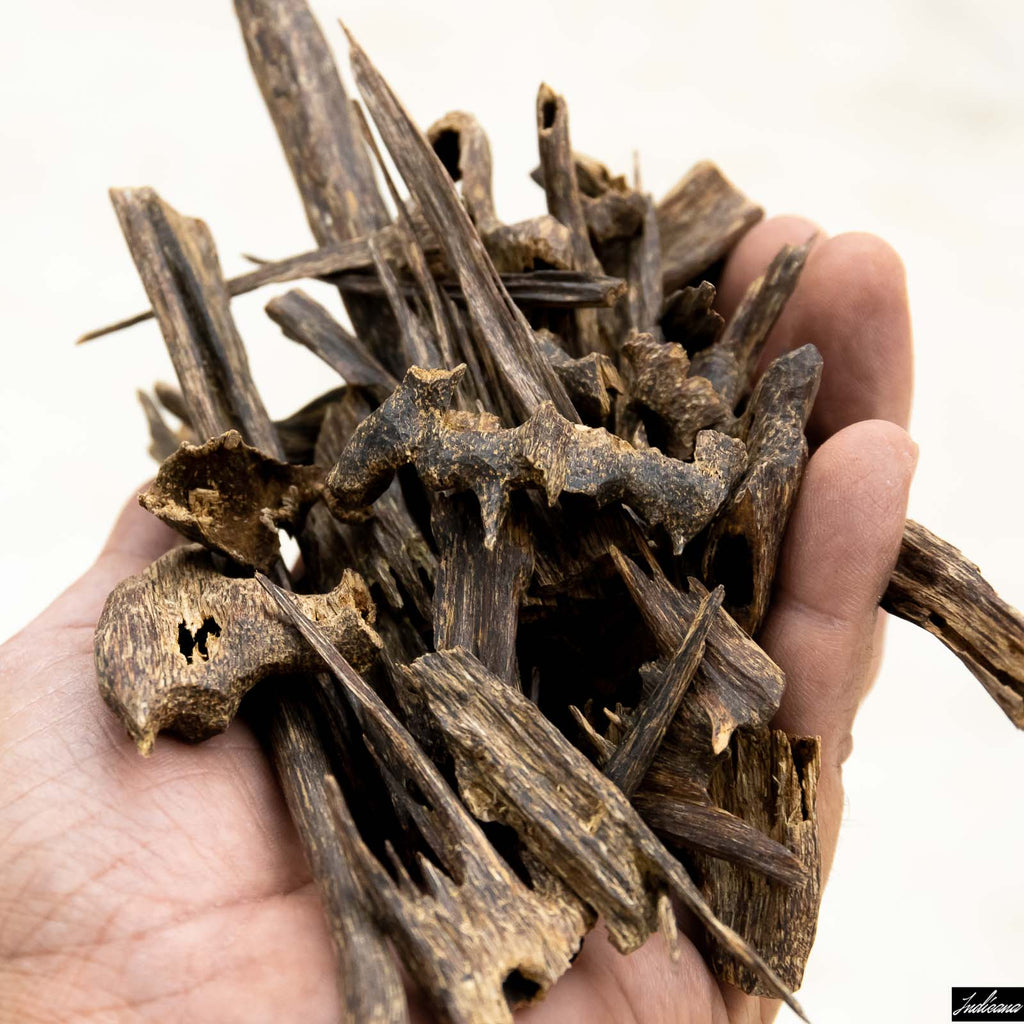
(Picture above: Finished oud chips ready to be used as incense)

How is Oud Oil Distilled?
The subject of distillation of oud oil from the oud wood is very vast however I will write about it very concisely here.
 (Picture above: Oud Oil Distillation in Process)
(Picture above: Oud Oil Distillation in Process)
The wood is ground into very small pieces of powder, which are immersed in water and left to ferment over time. Then the material is transferred to distillation kettles and steamed.

(Picture above: Oud Oil being light floats on top of water after Distillation)
After heating, the condensed water and oil are captured in a container where the oil floats on top of the water since oil is lighter. Pure oud oil is then separated from water and taken in a different vessel.
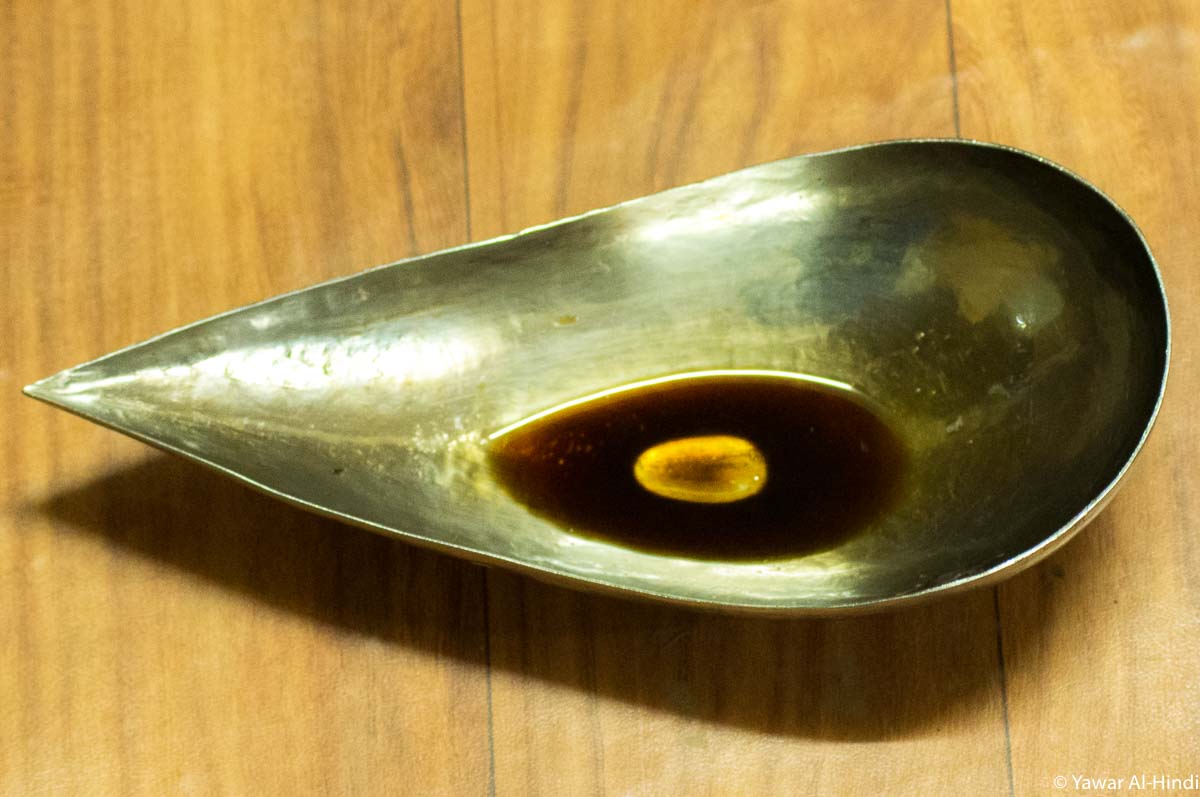 (Picture above: Oud Oil Separated from water after distillation)
(Picture above: Oud Oil Separated from water after distillation)
Oud Reigns Supreme!
The pure oud oil smells unlike anything on earth. Its heavenly. Different elements from the natural world of olfactory come together and lend their notes. The notes of earth, sky, air, rivers, forests, rain, fire, soil, animals all play in perfect harmony and orchestrate an aromatic symphony for the pleasure of olfactory senses!
Just like silk - the invention of the East that has been greatly cherished in the West, Oud also, a natural produce of the East is now making inroads into the Western world of perfumery and being loved and cherished by the West!
 (Picture above: Aged oud oil in bottles)
(Picture above: Aged oud oil in bottles)
Indicana Oud is your one stop exclusive store for pure oud products - oud oil and oud wood.
Check out our pure oud oils - click here
And also our high quality pure oud wood - click here.
And don't forget to check out our oud oil rated as one of the best Indian Oud Oil - click here
(Picture Above : Indian Adventures Pure Oud Oil - rated as one of the best Indian oud oil)
15 Responses
Riaz
Hi bro read the article I from Pakistan can tell me please how can I cultivate oud wood trees please in Pakistan
Nimrata Bhatia
I would like to know more please
Yvonne
20 some years I was in Saudi Arabia and bought about 2 oz of Agar wood (acularia AGA Lu ha), is there a place where I can sell it?
Yawar Alhindi
@Muhammad Ahmed Raza – I hope this article helped you learn about oudh and agar oil in brief. For any more details you may feel like learning, drop me an email.
Thanks
Muhammad Ahmed Raza
I want know about oudh and agar oil..
FoxAckerman
39
md arif
i intrested to cultivate to this plant
MUHAMMED
interested to know more about , is the oodh wood is available? and the price for exporters?
awaiting for your earliest reply,
thank you
Afsal
Hi
I would like to start oud buisiness in kerala. How can i get the raw materials? Can i get support fro. You?.
Yawar Al-Hindi
Hashmat – You can’t carry it out of India until you have proper license to do so. Please contact me for more information (email – info@indicanaoud.com)
hashmat
I want 5 kg of best quality agarwood chips please tell me the price and can i carry out of india ?
Yawar Al-Hindi
Hi Julie – As of now, we at Indicana Oud deal only in Indian oud.
Julie Sengi
Hi I am from Papua New Guinea. My father has a hectare of Agarwwood/Gaharu grown in our land and we are seeking for a possible market to export would you be able to assist. Kind Regards Julie PNG
Yawar Al-Hindi
@Rahish – Not sure what oud wood natural sambora is? If you can please explain further what it is then perhaps I may be able to help.
Rahish
I need oud wood natural sambora
Leave a comment
Also in Oud Info | About Agarwood | Benefits
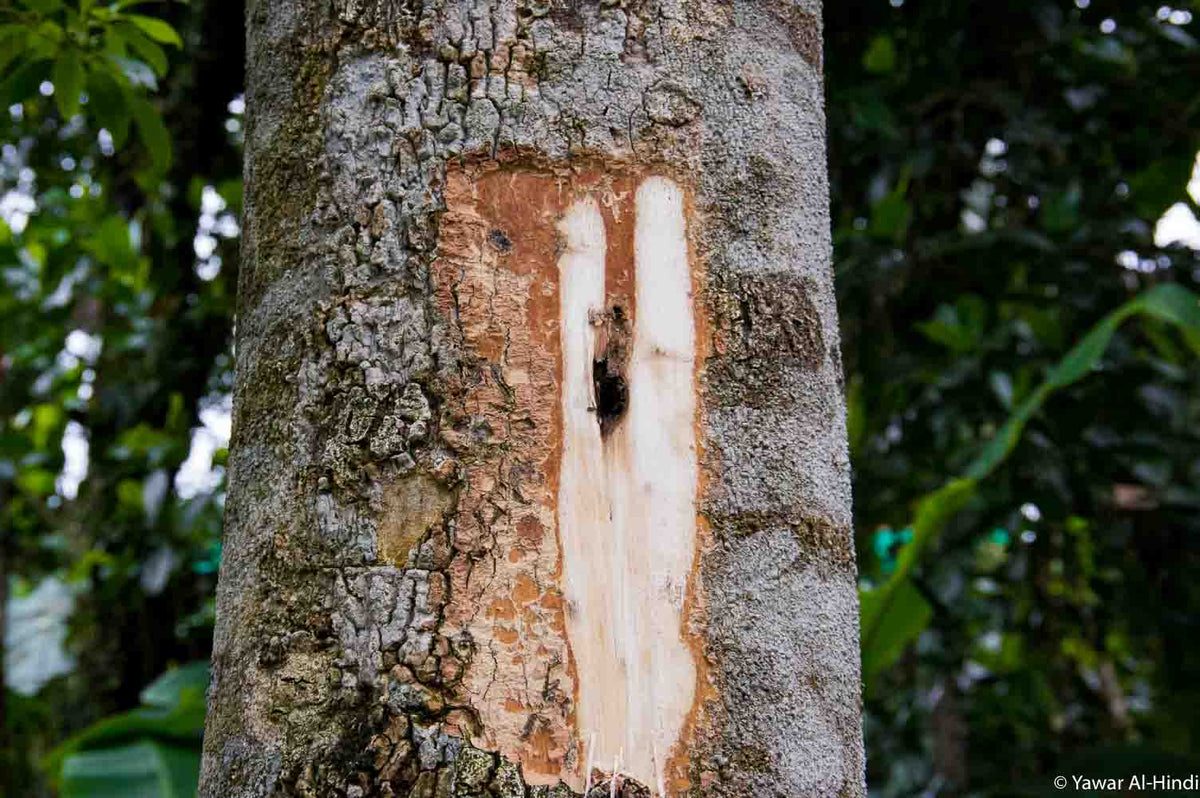
17 Benefits of Agarwood Oud that You Should Know
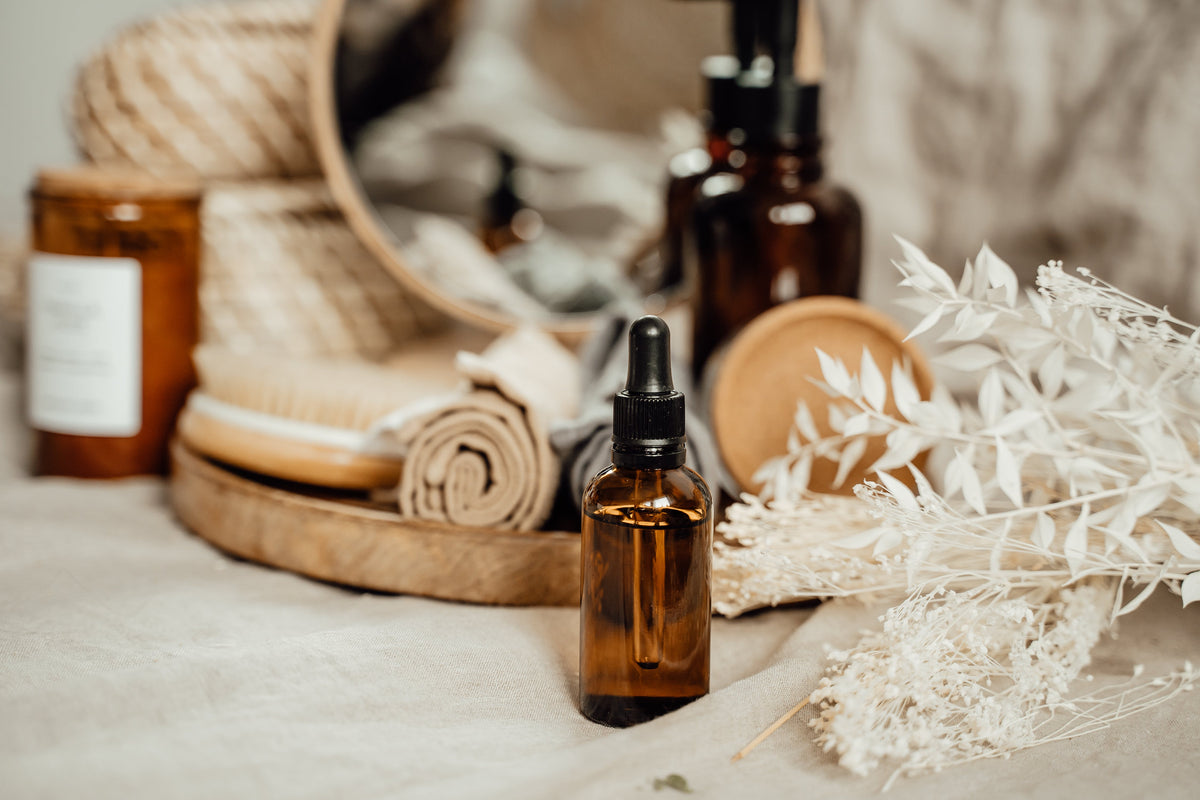


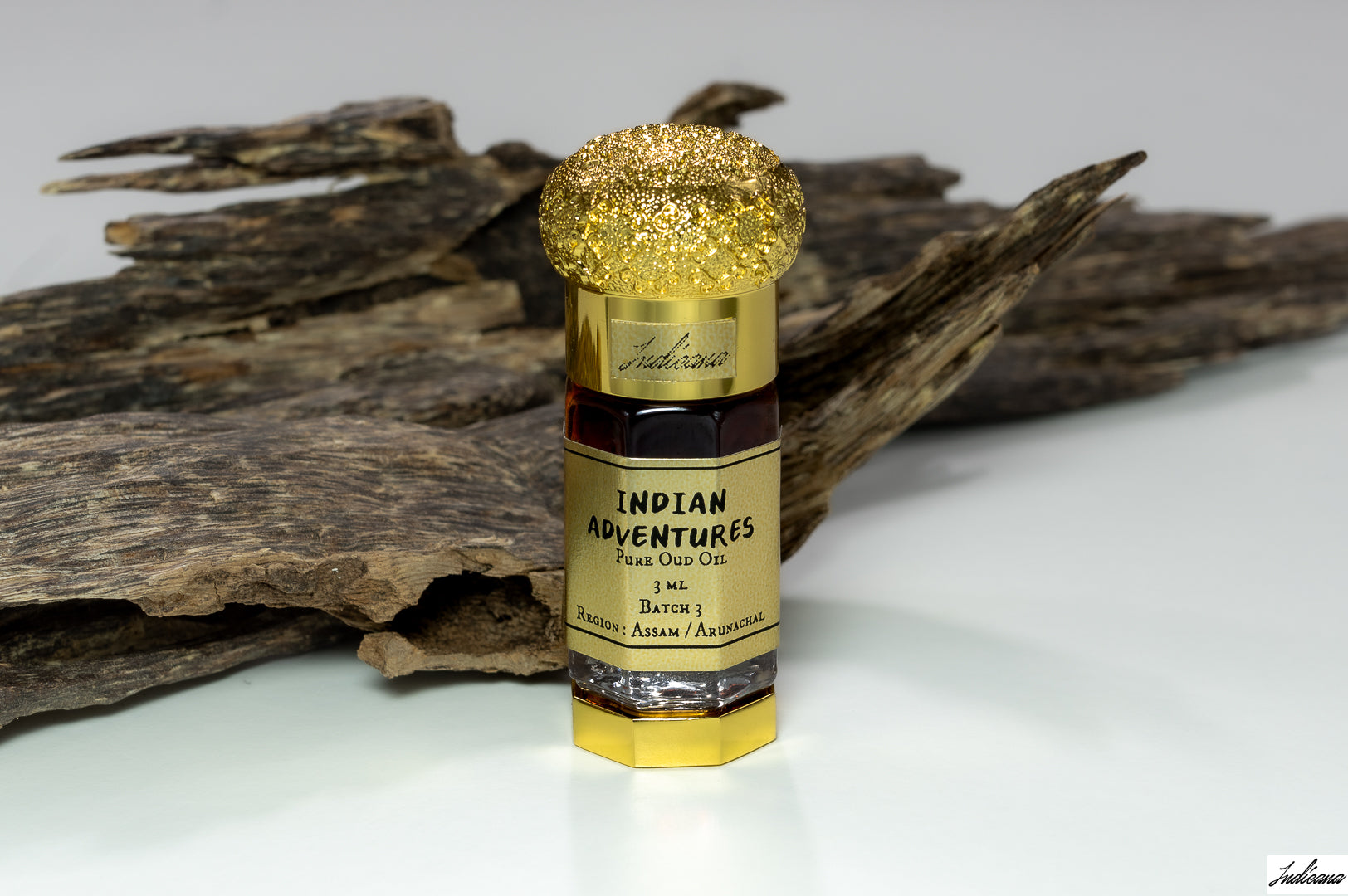

Yawar Saeed
Author
The visionary founder behind Indicana Oud, your premier destination for authentic oud products. With a deep-rooted love for oud and a commitment to authenticity, Yawar's mission goes beyond business; he seeks to enlighten and educate others about the multifaceted aspects of agarwood